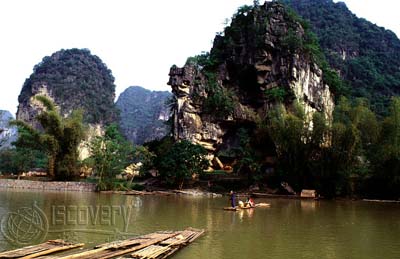Guilin Cultural Ancient City (Continued) - Guilin Historical Humanities
Guilin is a historical and cultural city with a brilliant history. The beauty of Guilin's landscape is known all over the world, giving Guilin tourism another globally recognized brand.
During the Ming Dynasty, not only was the large Jingjiang Princely Palace Pool constructed, but in the eighth year of Hongwu (1375 AD), the Guilin city wall was expanded. The city extended from today’s Rong Lake, Xiang Lake, and Shan Lake to the south up to the Tao Hua River. A moat was dug south of the city, a river dam (today's Rainbow Bridge) was built on the Tao Hua River, water was diverted to fill the moat, which then flowed north through the Elephant Trunk Hill and into the Li River, forming a section of the city-protecting river. After the expansion, the area of the city was one-third larger than the old city during the Song and Yuan Dynasties. After the expansion, Guilin City had a circumference of 12 li and had 12 city gates such as Dongzhen, Jiuri, Gui Shui, Xingchun, Dongjiang, Wusheng, Ningyuan, Lize, Baoxian, Xi Qing, and Anding. This scale and system of the city were maintained until the early years of the Republic of China.
During the Ming and Qing Dynasties, Guilin was a cultural center in the Lingnan region. Academia flourished, more academies and schools were established, scholars gathered here, and people from various places in Guangxi came here to study. The Gongyuan (imperial examination hall) was continuously expanded. In the Ming Dynasty, there were more than 1500 examination rooms, and during the Daoguang period of the Qing Dynasty, it reached 5011 rooms, showing the prosperity of science. During the Ming Dynasty, LinGui County produced 52 Jinshi degree holders, and during the Qing Dynasty, 188. Among them, four people from LinGui won the title of ZHUANGYUAN (top scorer in the imperial examination), namely Chen Jichang, Long Qirui, Zhang Jianxun, and Liu Fu Yao. Therefore, Guilin was called the "City of Zhuangyuan". Chen Jichang was one of the two people in the Qing Dynasty who achieved the triple first place (Jieyuan, Huiyuan, Zhuangyuan) over 200 years. His great-grandfather, Chen Hongmou, served as Grand Secretary of the Dongge Pavilion and Minister of Works, representing the Confucian scholars of the 17th century who emphasized practical learning, known as the "Confucian Master of Lingnan", with abundant works, mainly including "Five Kinds of Regulations" etc. The compilation of local gazetteers also yielded significant results. Xie Qi Kun was the main editor and Hu Qian the chief compiler of the "Comprehensive Laws of Guangxi" during the Jiaqing period, which was praised as a "model for provincial records", and Cai Chengshao was the main editor and Zhu Yizhen the compiler of the "Lingui County Gazetteer". The literary scene was flourishing with active literary creation. Famous poets of the Ming Dynasty included Bao Yu, Zhang Tengxiao and his son Zhang Wenxi, as well as Zhang Mingfeng. In the Qing Dynasty, there were hundreds of poets and scholars in Guilin. Zhu Yizhen was known as the "Crown Poet of YueXi"; Long Qirui, Zhu Qi, Wang Zhen, Peng Yuliao, and Lü Huang were known as the "Five Families of LingXi", having a certain status in the Qing literary circle; the "Ten Sons of Shanhu" also had a certain influence. Wang Pengyun and Kuang Zhouyi were two of the four major lyricists at the end of the Qing Dynasty, co-founding the "Lingui Lyric School". The painting circle in Guilin during the Qing Dynasty saw the emergence of many famous artists, with more than a hundred verifiable painters. Shi Tao was a unique master in the history of Chinese painting, Zhou Weigong was the top landscape painter of Guangxi, and Li Xiyuan, Li Bingshou, and Luo Cunli held important positions in the Guilin painting circle.
